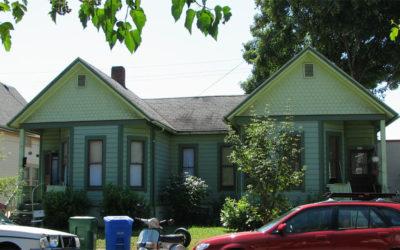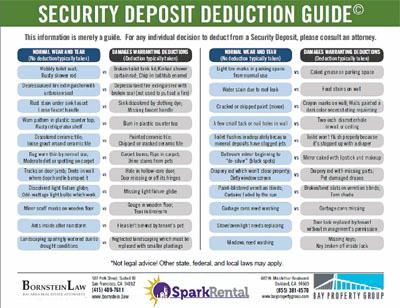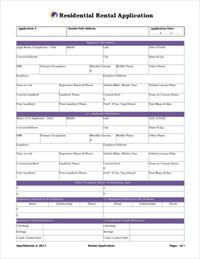Rental Property Calculator
Forget the guesswork. Use our rental property ROI calculator to KNOW a property’s returns!
Thinking about buying a new rental property? Or just want to check up how your existing rental unit is performing?
We put together this nifty rental property calculator to help you measure success. As the old saying in business goes, that which gets measured, gets done. If you want strong ROI, you need to keep your eyes on the prize.
Our rental income calculator accounts for both your up-front investment (down payment, closing costs, initial renovations) and your ongoing costs. And not just obvious costs like property taxes and landlord insurance, but the nagging expenses that pop up periodically in the real world: vacancy rates, ongoing maintenance and repairs, property management fees.
Start playing around with it! Enter numbers and see what happens. But we recommend including a vacancy rate of at least 6% and significant annual repair and maintenance expenses. Most landlords ignore CapEx at their own peril.
We also recommend including property management expenses, even if you’re managing the rental unit yourself — your time has value, too!
How Are We Calculating ROI?
Investors calculate return on investment (ROI for short) in different ways, but for rental properties, the three most important measures of returns are monthly cash flow, annual yield, and cap rates.
We don’t need to explain cash flow to you, but annual yield is one of those terms that accountants throw around that most of us just nod sagely at and pretend we know what they’re talking about.
Annual yield in this case is your cash-on-cash return: a property’s annual profits divided by your up-front cash investment. In other words, if you’re $20,000 out-of-pocket, how much of that “returns” to you in the form of profits every year?
For example, if you had $2,000 in annual profits from a $20,000 initial cash investment, that would be a 10% return on investment.
We do not include possible but unknowable variables, such as appreciation. Your rental property might appreciate… or it might not. Think of appreciation as a possible bonus.
The Rental Property Mortgage Calculator
We included a rental property mortgage calculator in the broader rental cash flow calculator above to make it easier to run the numbers if you leverage other people’s money to build your rental portfolio. As you can see, the interest rate impacts your rental cash flow — a lot.
You don’t have to take out a rental property mortgage. You can buy in cash if you like. But it’s worth pointing out that leveraging rental property loans doesn’t always mean higher risk, or worse cash-on-cash returns.
Imagine you have $100,000 to invest in an area where rental properties cost around $100,000. With your cash on hand, you could buy one rental property in cash. Or you could buy four rental properties with a 25% down payment on each. By using rental property mortgages, you diversify your investments by a factor of four!
You also get four times the appreciation, and four times the landlord tax benefits.
And sometimes, your cash-on-cash returns by leveraging rental property mortgages are actually higher. It depends on your interest and the other mortgage terms; you just have to run the numbers.
Which is why we built a rental property mortgage calculator right into our rental income calculator, and also calculate cash-on-cash returns for you.
Does this Rental Property Calculator Also Calculate Cap Rates?
Yep!
We have an entire article devoted to cap rates (which you should read if you don’t fully understand them), but here’s the quick version for the purposes of this rental property calculator.
Cap rates measure the expected return on a rental property, without factoring in financing. Specifically, it’s a ratio of the property’s annual income over its acquisition costs.
Here’s the formula:
NOI — net operating income — includes expenses such as property taxes, insurance, repairs and maintenance, property management costs, and vacancy rate.
As mentioned above, it does not include any financing-related costs (e.g. mortgage interest).
You’ll see “Cap Rate” listed as one of the ROI fields in the rental property calculator above.
Remember, cash-on-cash return is based on how much cash you’re putting up yourself (so your financing does impact this number). Cap rates are solely based on a property’s price, rent estimate, and expenses.
(article continues below)
Why Do Cap Rates & Cash-on-Cash Return Matter?
On the simplest level, these measures of a property’s returns help you compare potential investments.
Say you’re looking at two properties across the street from each other. They’re mirror images of one another: same rent estimate, same condition, same maintenance and repair costs — identical in every way.
 Both are for sale, and you’re thinking about buying one of them. How do you decide which one to buy?
Both are for sale, and you’re thinking about buying one of them. How do you decide which one to buy?
If everything else were equal (which, granted, it never is in the real world), you would want to buy the one with the higher cap rate. Higher cap rates mean more income for less cost.
Cash-on-cash returns are useful for comparing your returns on a rental property to any other type of investment. To keep this example just as oversimplified as the previous example, imagine you have $20,000 to invest somewhere. You’ve narrowed your options to a mutual fund and a turnkey rental property ($20,000 covers your down payment and closing costs).
Say the mutual fund pays a generous 5% annual dividend, and the rental property would deliver a cash-on-cash return of 7%. We’ll ignore potential appreciation of either asset to keep this example simple.
In that case, the rental property would deliver the better return on your $20,000, at least as far as income — annual yield — goes. Again, in the real world, one asset might appreciate faster than the other, or maybe you don’t want to use leverage, or maybe you prefer the liquidity of the mutual fund, or whatever.
But ultimately the purpose of calculating these rental property returns is to help you compare investments and choose the best one possible.
What’s a Good ROI for a Rental Property?
There is no one right answer for this question, but we’ll provide an answer anyway, because we don’t waffle or dissemble. In most cases, a rental ROI of under 5% is not worth pursuing (there would have to be other reasons to buy it besides ROI). You might as well invest in your retirement account instead, and save yourself the hassle.
Returns between 5-10% are reasonable for rental properties, if you’ve included some conservative cushions for annual repairs, vacancy rate, etc. An ROI of over 10% is a good deal, assuming you’ve used accurate rent estimate and expense numbers in your calculation.
Aim for at least $100 per door in monthly cash flow. Otherwise the headaches of vacancies, tenant maintenance calls, and evictions start outweighing the returns.
Lower-end properties tend to look better on rental income calculators than mid- and higher-end properties, but don’t be fooled. Estimate higher vacancy rates and higher repair costs for lower-end properties. You’ll have more frequent turnovers, which means more chasing down delinquent tenants and more repair expenses in painting, new carpets, repaired damage caused by tenants. Read: more hassles.
Final Thoughts
Before buying a potential rental investment property, use estimated numbers in the rental income calculator above. If it initially looks promising, dig deeper and find real-world, accurate numbers for that property as best you can, and plug in the better numbers to see if the ROI holds up.
Always use the lowest rent estimate and the highest possible expenses, or risk being “blindsided” when your property fails to perform!
More on Boosting Your Returns as a Landlord & Rental Investor
What Else Do You Want Help With as a Real Estate Investor?
FAQ About the Free Rental Property Calculator
What’s the difference between cap rate and ROI?
Capitalization rate, or cap rate, does not include financing as a factor. It’s a way to compare several properties solely on their non-mortgage expenses and income.
In our rental property calculator, we calculate cap rate for you, but we also calculate cash-on-cash return on investment (ROI). That looks exclusively at the return you can expect on the cash you put up for the property, thus including your financing as part of the equation.
What are “cash-on-cash” returns?
Cash-on-cash returns are the return on investment (ROI) you can expect to earn on just the cash you invest. It takes both the interest payments you’ll be making and the lower cash required into consideration.
Ultimately, it’s the amount of money you can expect to earn back every year in cash flow, as a percentage of the total cash you invested in the project. If you invested $20,000 toward the down payment and closing costs, and you earn $2,000 a year in cash flow, that’s a 10% cash-on-cash return.
It’s a great way to compare the potential return from a rental property to returns on any other investment, such as stocks or bonds, which is why we focus on it in our rental property ROI calculator.
Why should I include property management costs in my rental income calculations even if I plan to manage the property myself?
Property management costs are a labor expense, whether you’re performing the labor or someone else is. How can you compare the returns on a rental property to, say, a stock, if you don’t account for the labor required by one of them but not the other?
Besides, you never know when you’ll become unable or unwilling to continue managing the rental property.
We strongly encourage you to include property management costs when running the numbers in the rental property profit calculator.
How is this rental property calculator free? Do I need to sign up for anything?
You do not need to sign up for anything. It’s free and open to the public to use.
We do, of course, hope you check out some of our other free landlord resources while you’re at it!
How can I raise my rental property ROI?
Now you’re asking good questions! One option is of course raising the rent. Follow these tips when you raise the rent, to avoid losing your tenants.
You can also exercise these tenant retention tips, to reduce turnovers.
Finally, try these ideas for earning more money from your rentals.
What is “annual yield”?
Annual yield is your annual income for the property, as a percentage of the cash you had to invest to buy it. For example, if you invested $20,000 of your own cash, and earn $2,000 a year in net cash flow, that’s a 10% annual yield, also known as cash-on-cash return.
See? Not so scary. When you plug in the numbers in the rental property ROI calculator above, you’ll see this number spit out at the bottom.
How much are typical rental property expenses?
As a general rule of thumb, expect your rental property expense to run around 50% of the rent (AKA the 50% Rule).
But those numbers vary by property, by neighborhood, by city. Higher-end properties tend to have lower relative expenses compared to lower-end properties, due to lower vacancy rates, lower crime rates, lower turnover rates, etc.
But don’t lean on the 50% Rule when evaluating properties. It’s a quick shorthand, but because each property is unique, make sure you run exact numbers using the rental property calculator above.






















